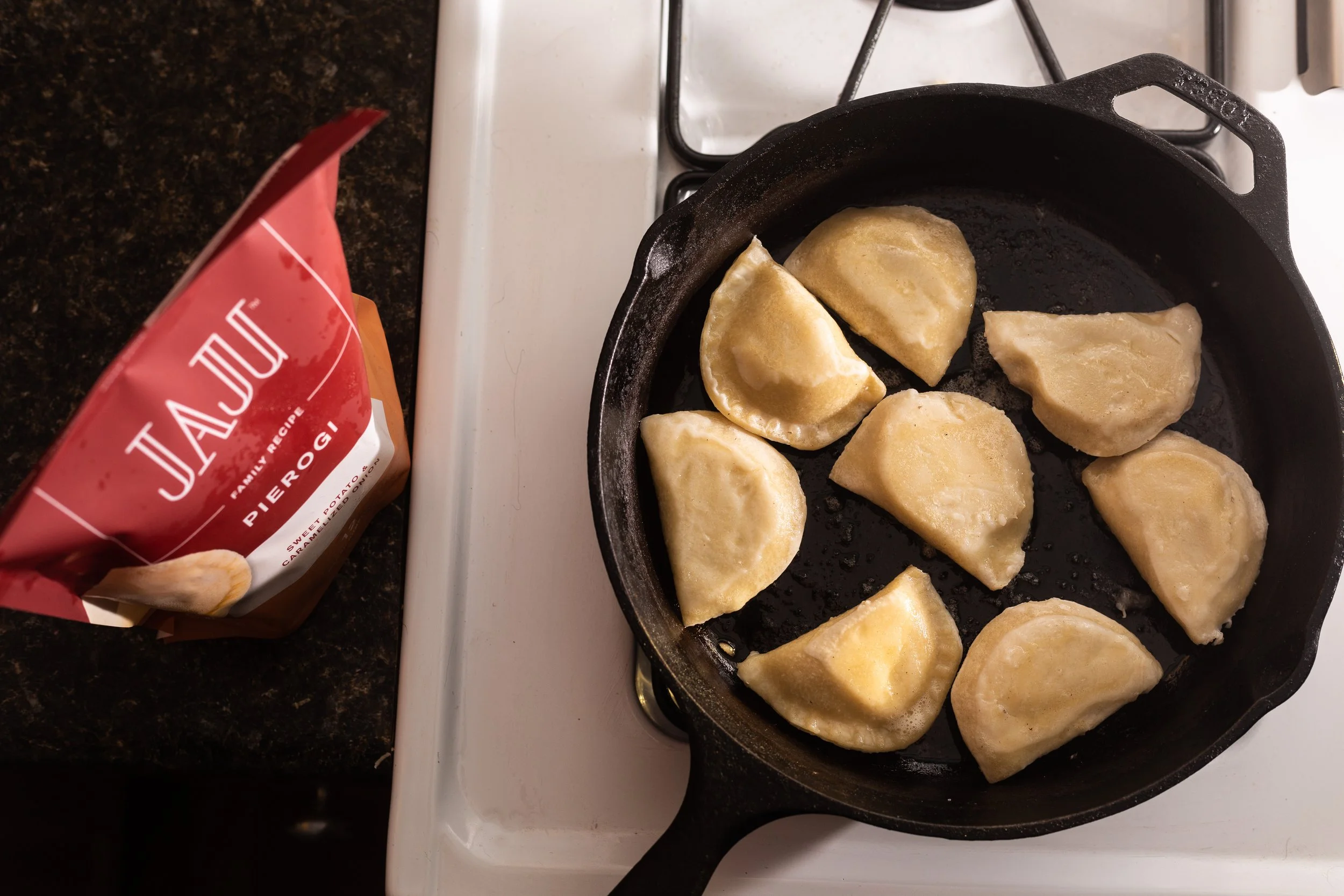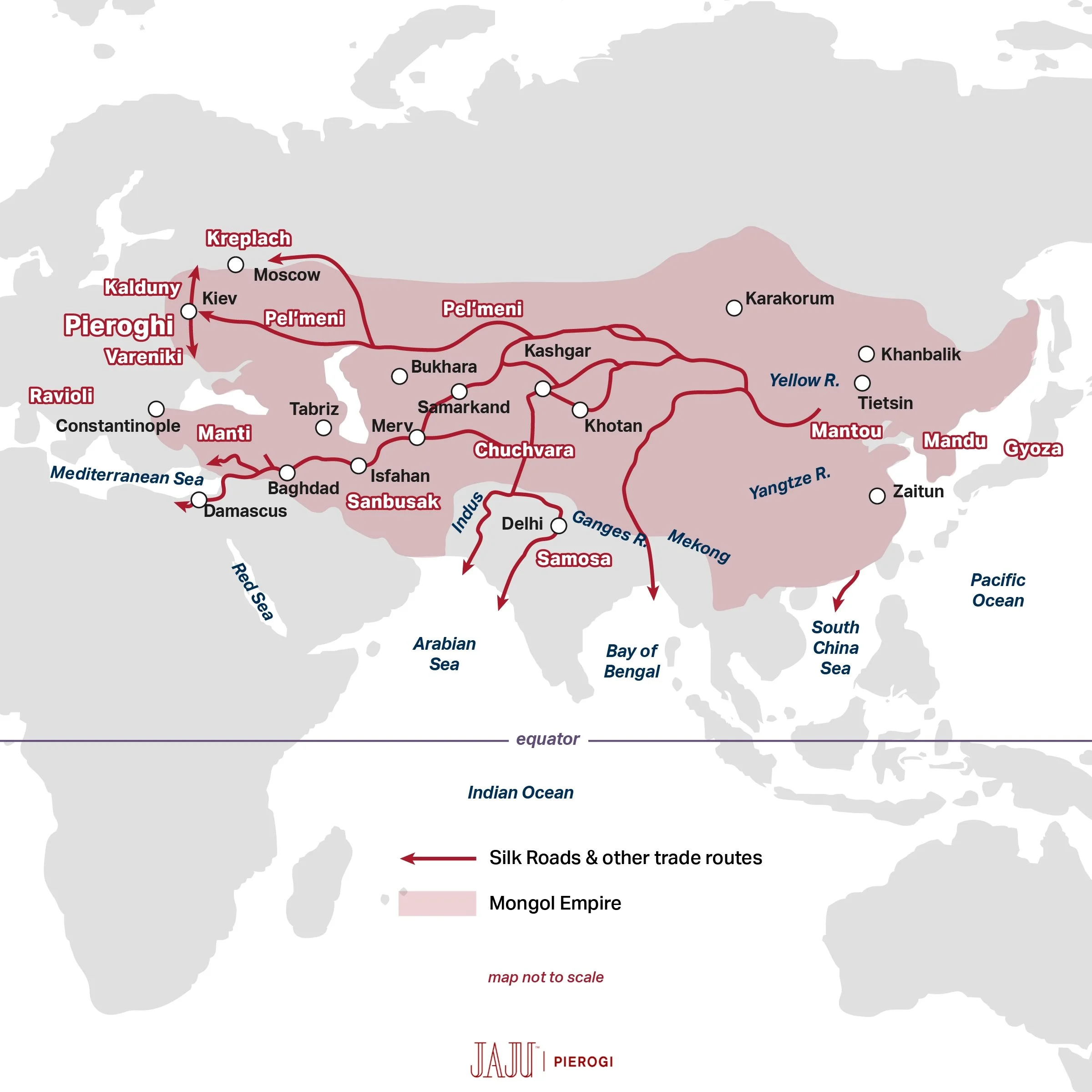The origin of pierogi
Today's pierogi hail from Central and Eastern Europe, and specifically, Poland, with cousins like varenyky in Ukraine or pelmeni in Russia. They’re made with a flour-based dough and traditionally stuffed with things like farmer’s cheese (twaróg) or potatoes (or both), or cabbage or sauerkraut, or fruit. But did someone create the idea of pierogi in Poland, or did they evolve from other cuisines?
While the exact evolutionary path of the pierogi is up for debate, scholars think that the concept of dumplings originated in Central Asia, where dumplings started simply as balls of unstuffed dough and were called manti. Scholars reason that the Turkic word manti is closely tied to other words for dumpling, like the Korean mantu, Chinese mantou, or manti, a Greek tortellini…and therefore likely inspired them.
These manti, or Turkic dumplings, spread from Central Asia to China, Korea, Japan, and Vietnam through the Mongol Empire and Ming Dynasty. At that point, the dumpling really caught on in Asia.
These Asian dumplings likely then traveled to Europe through trade, leading to the evolution of other stuffed pastas through the continent. In fact, the word pieróg (a single dumpling) might be tied to the word börek, which was also Turkic for a stuffed food. Polish lore has it that St. Hyacinth, the Patron Saint of Pierogi, introduced pierogi to Poland after returning from Ukraine in the 1200s. However, dumplings had likely made it to Kiev before that via the Silk Road and trade with Asia. We know for certain that ravioli show up for the first time in documentation in the 1500s, whereas our beloved pierogi show up in a cookbook in the late 1600s.
And if that weren’t enough, let’s not forget that the potato, a key ingredient in Polish food and in pierogi, was native to South America and only introduced to Europe by the Spanish in the late 1500s.
Food - including pierogi - continues to evolve today, even if we might not see it under our eyes. Who knows what kind of pierogi or dumplings they’ll be writing about in 300 years!
Sources:
Lauden, Rachel. (2013) Cuisine and Empire: Cooking in World History. University of California Press.
https://www.mentalfloss.com/posts/dumplings-food-history
https://theculturetrip.com/europe/italy/articles/ravioli-a-timeless-italian-tradition
https://www.scmp.com/lifestyle/food-drink/article/3126761/history-dumpling-ravioli-wonton-gyoza-why-they-all-belong-same
https://www.britannica.com/topic/pierogi


